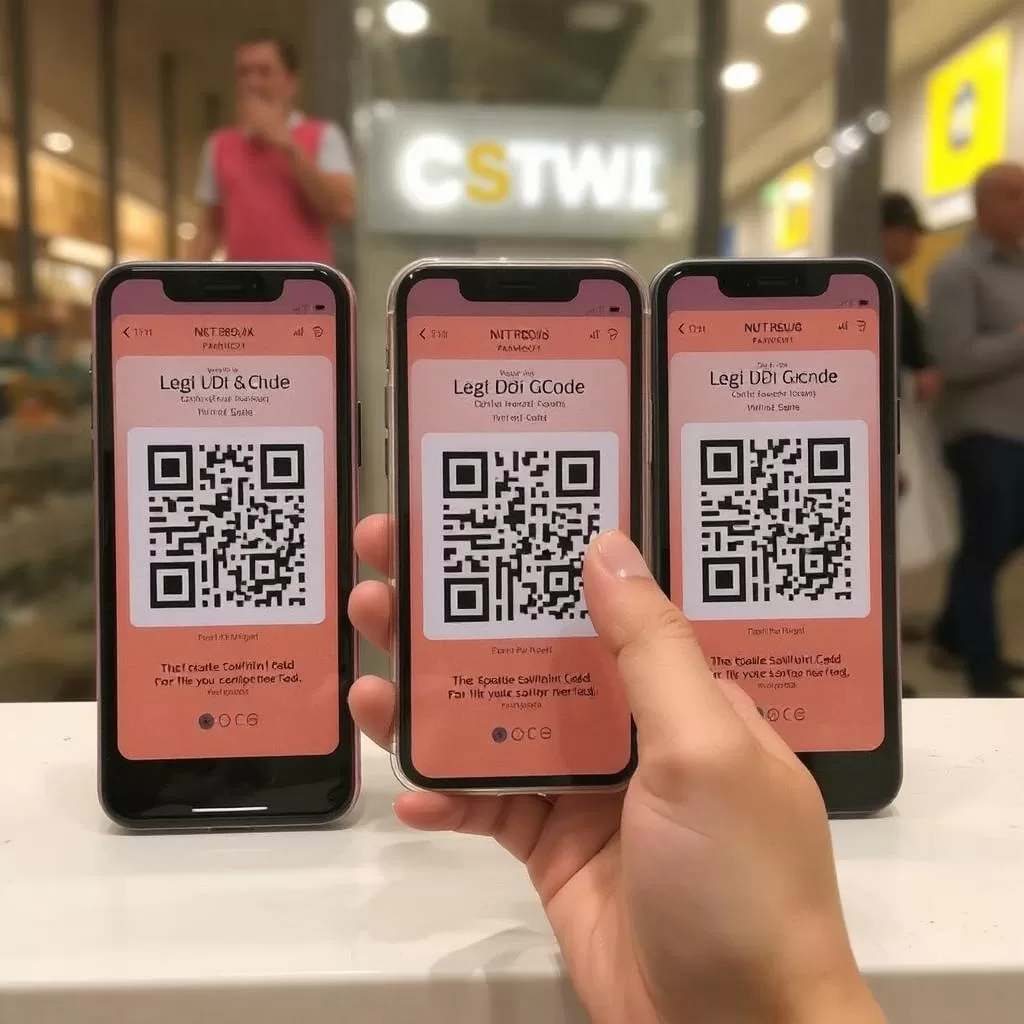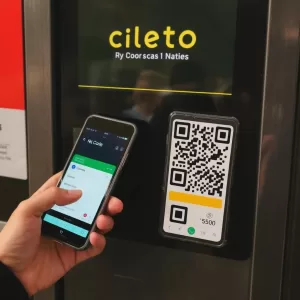QR Code Payments: How They Are Revolutionizing Transactions
QR code payments are revolutionizing digital transactions by making them faster, more secure, and easily accessible to users worldwide. As contactless payments become the new norm, industries such as retail, fintech, and e-commerce are rapidly adopting QR codes to streamline payment processes. The fintech revolution and increasing smartphone penetration are driving global QR code payment transactions, which are projected to exceed $3 trillion by 2025. This marks a significant shift towards a cashless, digital-first economy.
What You’ll Learn in This Article:
- How QR code payments work
- The advantages of QR-based transactions
- The future trends shaping QR payments
What Are QR Code Payments?
QR (Quick Response) codes are advanced 2D barcodes that store a wealth of information, including payment details. Unlike traditional barcodes, which are linear, QR codes can store data both horizontally and vertically, making them capable of holding much more information. When users want to complete a transaction, they simply scan the code using their smartphone camera or a payment app. This process instantly retrieves the payment details stored in the QR code, allowing for a seamless, contactless transaction.
The simplicity and speed of QR code payments have made them an increasingly popular choice for merchants and consumers alike, as they offer a quick and secure way to handle digital payments without the need for physical cards or cash.
Types of this payment Mode:
✔ Static QR Codes – These are fixed codes that are linked to a merchant’s account. The code remains the same for all transactions and typically includes the merchant’s payment details, such as account number or payment gateway link. While convenient, static QR codes are less secure since they are reused for multiple transactions, making them more susceptible to fraud.
✔ Dynamic QR Codes – These are generated for each transaction and are unique to the payment. Dynamic QR codes contain encrypted transaction details that can change with each scan, ensuring higher security and reducing the risk of fraud. These are particularly useful for one-time transactions, adding an extra layer of safety while also enabling more personalized payment experiences.
💡 For example, Apple Pay, Google Pay, and PayPal offer QR code payment options.
🔗 Related: QR Code payments – is this the end of cash?
How QR Code Payments Work
QR code payments involve three simple steps:
1️⃣ Scan the QR Code using a mobile payment app: The payment process begins by scanning the QR code with a mobile payment app, such as PayPal, Google Pay, or Apple Pay. The code contains essential payment information, including the merchant’s details and the transaction amount. This scan initiates the payment process and links the user’s device to the merchant’s payment system, facilitating a smooth and quick transaction.
2️⃣ Confirm the amount & authentication (e.g., fingerprint or PIN): After the QR code is scanned, the payment details are displayed on the user’s device, showing the exact amount to be paid. The user then verifies this information to ensure that it is accurate. To ensure security, the user must authenticate the transaction using secure methods such as biometric authentication (e.g., fingerprint or facial recognition) or by entering a PIN. This adds an extra layer of protection, ensuring that only authorized users can complete the transaction.
3️⃣ Payment is processed instantly via a linked bank or digital wallet: Once the user confirms and authenticates the payment details, the system processes the payment instantly. The system debits the user’s account, whether linked to a bank or a digital wallet, in real-time, and securely transfers the funds to the merchant’s account.This instant processing allows for quick and seamless transactions, reducing the need for traditional point-of-sale (POS) hardware or long wait times, making the process more efficient for both merchants and consumers.
💡 For example, Starbucks and McDonald’s use QR payments for faster checkouts.
Why QR Code Payments Are the Future
Key Benefits of QR Payments:
- Fast & Contactless: QR code payments eliminate the need for cash or physical cards. With just a scan, users can quickly complete transactions, making the process faster and more convenient. This contactless feature also reduces the risk of physical contact, especially in crowded or high-risk environments.
- Secure: Transactions made via QR codes are encrypted, ensuring that sensitive data remains protected during the payment process. This layer of security significantly minimizes the chances of fraud, unauthorized access, and data breaches, providing peace of mind to both merchants and customers.
- Cost-Effective: One of the major advantages of QR code payments is the lack of need for expensive hardware or point-of-sale (POS) systems. Merchants can accept payments without investing in costly equipment, which makes QR payments a highly affordable solution for businesses, particularly small and medium-sized enterprises.
- Universal Accessibility: QR code payments work seamlessly with any smartphone, regardless of the make or model. This universality ensures that both consumers and merchants, regardless of the type of phone they use, can enjoy the convenience of QR-based transactions, expanding the technology’s reach across all user demographics.
QR Code Payments in Different Industries
✔ Retail & E-commerce: QR codes are revolutionizing retail by enabling faster checkouts both in-store and online. Customers can simply scan the code to complete transactions, eliminating long queues and reducing the reliance on cash or cards. Moreover, this method enhances the shopping experience by offering instant discounts, loyalty rewards, or personalized promotions during the checkout process.
✔ Fintech & Banking: In the fintech and banking sectors, QR code payments offer secure, instant transfers and bill payments. Users can effortlessly send funds to individuals or businesses by scanning a code, making financial transactions more efficient and accessible. Additionally, the encryption technology behind these payments significantly reduces the risk of fraud, ensuring that sensitive data remains protected throughout the transaction.
✔ Transportation: For the transportation industry, QR codes enable smooth, digital ticketing and ride payments. Commuters can scan codes to access tickets or pay for services without needing cash or a physical card. This not only reduces wait times but also helps streamline operations by eliminating the need for ticket booths and simplifying fare collection, especially in high-traffic areas.
✔ Restaurants & Cafés: In dining establishments, QR codes provide a contactless way to order food and pay bills, making the process both hygienic and efficient. By scanning the QR code on their table or menu, customers can easily browse the digital menu, place orders, and pay with their phones, enhancing their overall dining experience while minimizing physical contact with staff. This trend is especially relevant in the post-pandemic world, where safety and convenience are priorities.
💡 For example, China’s WeChat Pay & Alipay dominate QR payments globally.
Security Features of QR Payments
How they Stay Secure:
✔ End-to-End Encryption: To ensure that sensitive user data remains protected, QR code payments utilize end-to-end encryption. This means that information transmitted between the user’s device and the merchant’s system is encrypted, making it unreadable to potential cyber attackers. As a result, this technology safeguards payment details from theft or interception during the transaction process.
✔ Tokenization: QR code payments also incorporate tokenization to enhance security. Instead of using actual credit card or bank account numbers, the system generates a unique transaction code (token) for each payment. This token replaces sensitive financial information, ensuring that even if attackers intercept a transaction, they cannot access any useful data.
✔ Multi-Factor Authentication (MFA): To further secure QR code transactions, multi-factor authentication (MFA) is often required. This means that users must verify their identity through multiple methods, such as a PIN, fingerprint, or facial recognition, before completing the payment. This added layer of protection ensures that only the authorized user can approve and finalize the transaction, reducing the risk of unauthorized payments.
🔗 Related: How to Secure Your Online Payments: 10 Essential Tips
Future Trends in QR-Based Mode
🚀 AI-Powered QR Payments: As AI technology continues to evolve, we can expect to see enhanced fraud detection systems integrated into QR payment systems. AI can analyze user behavior in real-time, identify suspicious activity, and flag potential fraudulent transactions instantly. This will help prevent unauthorized payments and improve the overall security of QR code transactions.
🚀 Blockchain Integration: Developers are likely to incorporate blockchain technology into QR payments, enabling decentralized transactions that deliver greater transparency and security. With blockchain, the system records each QR transaction on an immutable ledger, reducing fraud risks and fostering a higher level of trust between users and merchants.
🚀 Cross-Border QR Payments: As QR payments continue to grow, the future will see efforts to standardize these systems for international use. Cross-border QR payments will become more seamless, enabling users to make instant and secure payments regardless of their location. This standardization will simplify international commerce, particularly in sectors like travel and e-commerce.
🚀 Wearable QR Payments: The rise of wearable technology, such as smartwatches and AR glasses, will lead to the integration of QR code payments into these devices. This will allow users to make transactions on the go, without needing to pull out their smartphones. With simple gestures or voice commands, users will be able to scan QR codes and complete payments directly from their wearables, making transactions even more convenient and hands-free.
💡 For example, India’s UPI QR code system is revolutionizing cashless transactions.
Conclusion: The Rise of QR Code Payments
QR code payments are rapidly transforming the landscape of cashless economies by providing a fast, secure, and universally accessible method for digital transactions. Their growing popularity is driven by the need for efficient, contactless payment systems that cater to both consumers and businesses in today’s fast-paced world. With the ability to facilitate instant payments without the need for physical cards or cash, QR codes are increasingly becoming the preferred choice for both small and large-scale transactions across various industries.
The benefits of QR code payments are undeniable—fast, secure, cost-effective, and universally accessible, making them a game-changer in the financial ecosystem. Their versatility spans retail, e-commerce, banking, transportation, and hospitality, enabling businesses to provide smoother, more convenient experiences for their customers. Furthermore, with technological advancements like AI, blockchain, and wearable integrations on the horizon, the future of QR code payments looks even more promising, offering higher levels of security, efficiency, and global interoperability.
As we move towards a fully digital, interconnected world, QR code payments will continue to play a central role in driving the adoption of cashless transactions. With robust security measures and user-friendly interfaces, they not only enhance the payment process but also pave the way for a more secure and streamlined future for global financial systems. Therefore, businesses and consumers alike must embrace this innovation as it continues to shape the future of payments and digital commerce.
Key Takeaways:
✅ QR payments are contactless, secure, and cost-effective. They offer a fast and efficient alternative to traditional payment methods, reducing the need for physical cards or cash.
✅ Industries from retail to fintech are adopting QR transactions. From e-commerce to banking, various sectors are integrating QR code payments to streamline transactions and improve customer experiences.
✅ Future trends include AI, blockchain, and global standardization. As technology evolves, QR payments will become more secure with AI-powered fraud detection, decentralized through blockchain, and standardized globally for seamless cross-border transactions.
✅ Convenient and Easy to Use: QR code payments simplify the transaction process for both consumers and merchants. Users only need to scan the code and authenticate the payment, eliminating the need for lengthy card swipes or manual data entry. This ease of use makes it an ideal solution for quick transactions in various settings, from retail stores to restaurants.
✅ Environmentally Friendly: QR code payments contribute to reducing paper waste by eliminating the need for printed receipts and physical cards. With digital records of transactions, both consumers and merchants can go paperless, supporting more sustainable and eco-friendly practices in the payment process.
✅ Instant Payment Confirmation: QR code payments offer real-time transaction processing, allowing customers and merchants to receive instant confirmation once the payment is complete. This feature enhances the overall user experience by providing immediate feedback and reducing transaction wait times.
For more insight on this topic, read this article. Benefits of QR code payments. If you are seeking to Develop a QR code Payment solution or looking to integrate into your existing project, contact Teknikali Tech today.
💬 Are you using QR code payments? Share your experience in the comments!
Share this content:







Post Comment